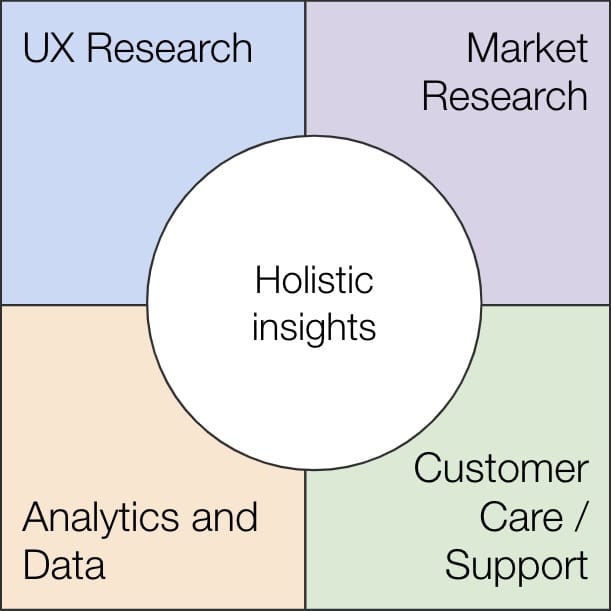Blog

OKRs for Design Orgs
· Peter Merholz

Craft Your Leadership Plan with These 5 P's
· Peter Merholz

Critique is not review, and many other thoughts on an overlooked practice
· Peter Merholz

Whither UX Research?
· Peter Merholz

To Lead Design, You Must Have an Agenda
· Peter Merholz

On the (f)utility of design maturity models
· Peter Merholz
UX/Design Leaders: Understand the motivation of your peers and stakeholders the same way you do your users and customers
· Peter Merholz
New masterclass: "From Ladder to Trellis: Flexible Career Architectures for UX Teams"
· Peter Merholz
Metrics and UX/Design Maturity
· Peter Merholz
Design leadership is change management
· Peter Merholz
Org Design for Brand Design Orgs
· Peter Merholz
The 'management carousel' inhibits UX professional growth
· Peter Merholz
The Leadership Ceiling: a framework for diagnosing your situation
· Peter Merholz
"Agile" is eating design's young; or, Yet Another Reason why "embedding" designers doesn't work
· Peter Merholz
Design orgs are their own greatest impediment to success in recruiting and hiring
· Peter Merholz
From the Weeds to the Board Room—How Design Leaders shift from managing down to up and out
When working with executive design leaders across organizations, I often hear something along these lines. Their Managers and Directors don't know how to best spend their time, and where to focus their attention.
· Peter Merholz
Creative and Strategic Leadership in Design Orgs—Super-Senior ICs and the Shadow Strategy Team (3rd in a series on Emerging Shape of Design Orgs)
· Peter Merholz
Design Systems and Structural Integrity—Emerging Shape of Design Orgs (2nd in a series)
· Peter Merholz
The Emerging Shape of Design Orgs (first in a series of I don't know how many)
· Peter Merholz
This interview with Billie Jean King is a masterclass on leadership
· Peter Merholz
It was 20 years ago today...
· Peter Merholz
Waking up from the dream of UX
· Peter Merholz
The Craft(s) of Leadership: Communication and Information Architecture
· Peter Merholz
Firing is often not an act of accountability, but cowardice
· Peter Merholz
The cultural divides within product and marketing teams
· Peter Merholz
What is "good design," anyway?—it's crucial for design orgs to define quality
· Peter Merholz
End of the work year reflections on design, design leadership, and org design for design orgs
· Peter Merholz
The most difficult thing for a Design Executive to accept...
· Peter Merholz
The Makeup of a Design Leadership Team
· Peter Merholz
The Makeup of a Design Executive (Chief Design Officer, S/VP of Design)
· Peter Merholz